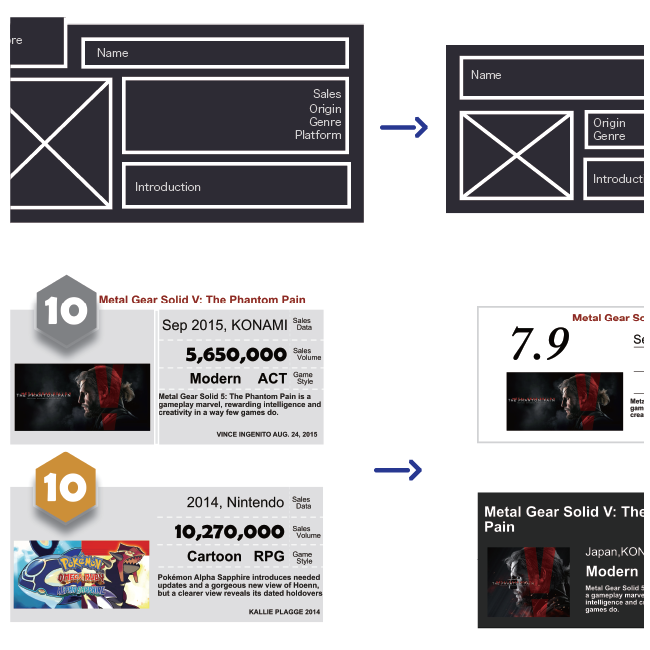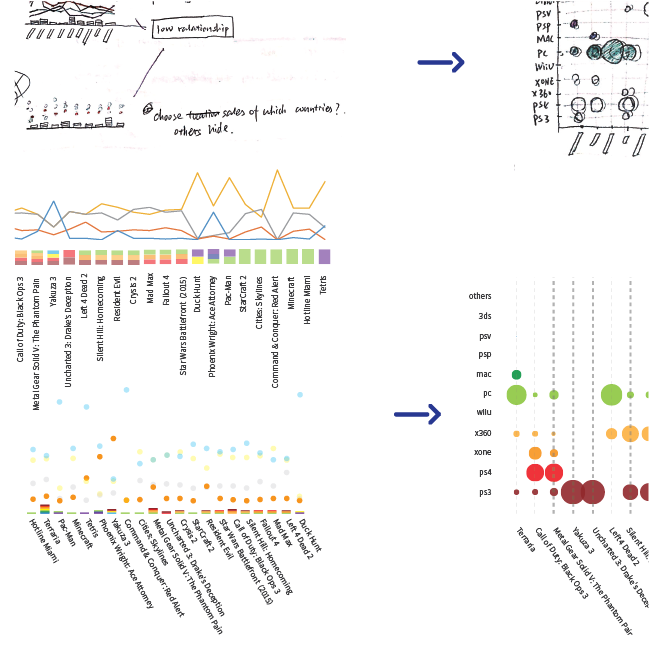The affects of Videogames
Introduction to the project
Salor is a game-boy, and always playing video games until midnight. But different from other gamers, Salor is picky for games, sometimes feels the visual style of the game is not suitable, sometimes feels playing those 3A games (usually refers to a game published by a major publisher, enjoying a large budget and a large team working on it over a few years) is really a waste of time, or even sometimes thinks it’s not interesting only because of the name. As a result, it becomes a
difficult thing for Salor to find one satisfying game. One day at 3am, when Overwatch hadn’t been tested online, when mosquitoes were already fell asleep on the wall, Salor finally killed the last boss in Dark Soul III, put out the fire and saved the world. Seeing the dark on the computer and hearing the last voice from fire keeper, Salor begin to ask an important question for himself: “what to play next?”
Salor couldn’t help coming to ask Ewan who is also a gamer but as well as a designer. However, Ewan’s hobbies are much different from Salor’s, and she
could rarely recommend a game that Salor also feel perfact. They even began to argue about whether Japanese magic style is better than western magic style.
“Japanese magic style focus on the appearance of each characters and sells well in Asia”, said Ewan. “But few people from other countries play them. Of course the video games with western magic style have more followers. See Dark Soul III” said Salor. The discussion continued until evening. Stars seemed like thousands of video games for Salor, and they twinkled their unique characteristics in his eyes. An idea suddenly hit him, which is to make a visualization of different kinds of data of video games so that to explore why they attract and effect people. To reach the goal, Salor involved two more friends Shiny and Mojeit, who also loves playing video games. They quickly reached an agreement and began their work
Where to get data
As the main topic is “the affects of video games”, the first thing to do is getting data about video games. We searched on the internet to see where to get the data, and came up with several approaches.
- Game Official Websites Nintendo / Blizzard
- Online Game Stores Steam
- Social Media Websites Weibo / WeChat / QQ / YY
- Live Websites BiliBili / 斗鱼 / sina / tweictch
- Data Websites VGChartz / SteamSpy
- Other Platforms 机核网 / IGN
We mainly collected data from existing video games data websites, such as VGChartz (physical edition of games; sales/coutries/platform) and SteamSpy (digital edition of games; only for PC/mac; sales/playtime/coutries/audience). The former one shows the sales a large amount of physical edition of video games on different platforms, which also divided into 4 areas: North America, Europe, Japan and the rest of world. While the another one SteamSpy is a data collection of games on Steam which is the most famous digital computer games stores. We can also see sales of different countries on SteamSpy and even more detailed. And another important website is IGN (scores/introduction), where we can collect professional scores of each video games as well as some simple introduction and screenshots. We also referred to social media websites (Weibo, WeChat, QQ, YY,) live websites (BiliBili, Douyu, sina, tweictch), game official websites, online game stores (Steam), and other platforms (Jihe website).
What Inside the Database?
We did a quick survey online and realized that the affects of games is not only have connection with sales and scores, but also with other factors like visual styles, theme, origin, platform, time, etc. Only taking all these factors into account could we make it meaningful to analyze the affects of video games. So, we selected carefully which game can be listed in the database. We searched
the scores of the game in different game media, compared sales of the game comprehensively, and considered the effects of the whole development of video
games. And finally, 70 video games were selected, according to the former factors, and collected data of origin, date, company, sales, score, platform and styles (combination of visual style and theme).
To make it more attractive for gamer and some video game company, we decided to make some connection between different kinds of data.
We use numbers to represent these factors and make the whole database in order.
General The first is an overview of all the games, which we hope to present the general status of each game and leave a general impression for audience.
Sales - genre What kinds of genre is more famous, and what is less? We want to answer the question by drawing a graph to connect sales and genre of video games. Further more, we want to let people know the connection of genre and where the origin is as well as where the audiences are.
Sales - style We classified video game styles into 7 kinds: wasteland, fiction, fantasy, western magic, ancient, current and pixel. Some games might be a mixture of two of more. Similar as connection of sales and genre, we also want to answer that kind of question. We hope to emphasis the artistic value of video games through it.
Platform A certain video game might choose to only develop edition for single platform or all platforms (more than three). We want to analyze the trend of what kinds of platform companies prefer to develop and also people prefer to use in different areas.
CompanyThere are many famous video game companies, and they have made big progress for the development of video games. And we want to visualize the information of each game from the perspective of companies.
Game information Just visualize the detailed information of each game. This part might show as an information tag.
How to begin and visualize?
We began with the connection of visual styles and sales in different places. We select 14 games and discussed the detailed relationship of origin, total sales, sales in certain areas, visual styles, based on RAW. During the process of trying RAW, we also searched for other references and sketch what we learned from them and what we though about.






Sales - genre/style The graph of sales - genre and sales - style are mainly use the similar graph strycture.
So, we took them into account together.
In the left one, color is the sales in different areas. Can show the where the audience
of each genre comes from. And we transfer to the right one, in which color
represents the genre of games. We can clearly know what genre of games is the
most famous. But it will be 4 graphs if we want to show sales in different areas.
We selected colors to represent genre of video
games. And the colors became our color standard
later.
Platform As for the platform, audiences may want to know: 1) what platform; 2) sales of
each platform of the game/ in total; 3) where the gamer using the platform
comes from.
The two graphs on the left can answer the question 2, and the one on the right
can answer the question 3. As we have already do something about sales in
different area, so we decided to use the right one.
Company The data visualization is about the relationship between sells of game, company
and years. We choose ten famous game companies. Time period is from 1985 to 2016. During this period of time the game output is
the largest. To make it more suitable to the whole visual style, we decided to use circle
instead of rectangle. In the later one, the color of the graph represents type of
game.The size of the graph represents the sales of the game
Game information We choose a stable background color (RGB 32, 30, 38) to accommodate with the
style of whole graphic. And we used the most classic font——Helvetica Neue as a
main font, and we chose the Adobe Caslon with an elegant gold color to emphasize
the important information of game like score and sales number. A beautiful
cover of game will give you deeper image of this game.
Final Visualization
project public page on github | access the visualizations online | download visualization in pdf
Project by WU Shiyu | LI Jingcheng | PAN Mengzhen | GU Han
back to top